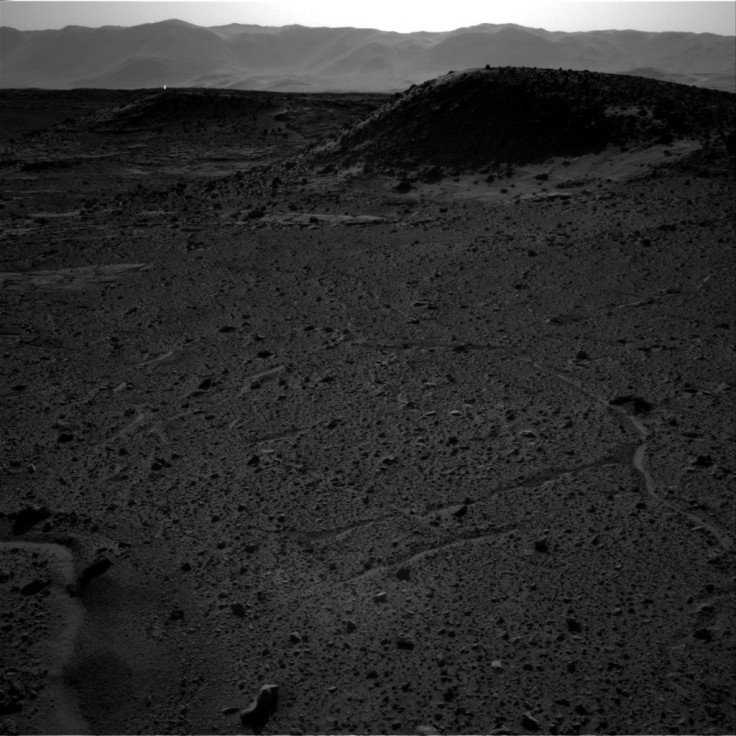Mars Mystery Light Joins Mars Jelly Doughnut Rock And Mars Rat As ‘Proof’ Of Aliens On The Red Planet
NASA’s Curiosity rover was busy scouting out its new location, an area known as “the Kimberley,” and in one of the raw images a tiny speck of light appears in the background. Of course, when anything remotely unusual happens on Mars, chances are someone will claim that is proof of alien life on the planet.

The Houston Chronicle reported on the “strange bright light” that was captured by Curiosity. The article links to a dubious site called UFO Sightings Daily and their report on the mystery light, which claims the light is “could indicate there is intelligent life below the ground and uses light as we do.”
Word quickly spread of the Mars mystery light, and many were quick to debunk the alien theory and explain the source of the light through science. On Twitter, Doug Ellison, a visualization producer at NASA’s Jet Propulsion Lab and founder of Unmannedspaceflight.com, said it was nothing more than a “cosmic ray hit.” Ellison points to an image taken by Curiosity’s left-Navcam; the mystery light photo was taken with the rover’s right-Navcam at the same time, which shows no evidence of the light.

Phil Plait on Slate elaborated on what a cosmic ray is, a charged subatomic particle, and what they do to camera sensors. Plait said it was nothing more than a camera artifact. Ellison wished the Mars mystery light was not a story and that Curiosity’s large body of work, and scientific discoveries, was more worthy of attention than a camera artifact.
Prior to the Mars mystery light there was the Mars “jelly doughnut” rock and, perhaps the best example of life on Mars, the infamous Mars rat of 2013. The jelly doughnut rock did have researchers stumped, with one person claiming NASA was covering up proof of life, but the mystery was soon solved. The rock was kicked by the Opportunity rover as it traveled downhill, reports NASA. As for the Mars rat, that was likely due to pareidolia, the phenomenon where we see faces in random objects.
© Copyright IBTimes 2024. All rights reserved.






















